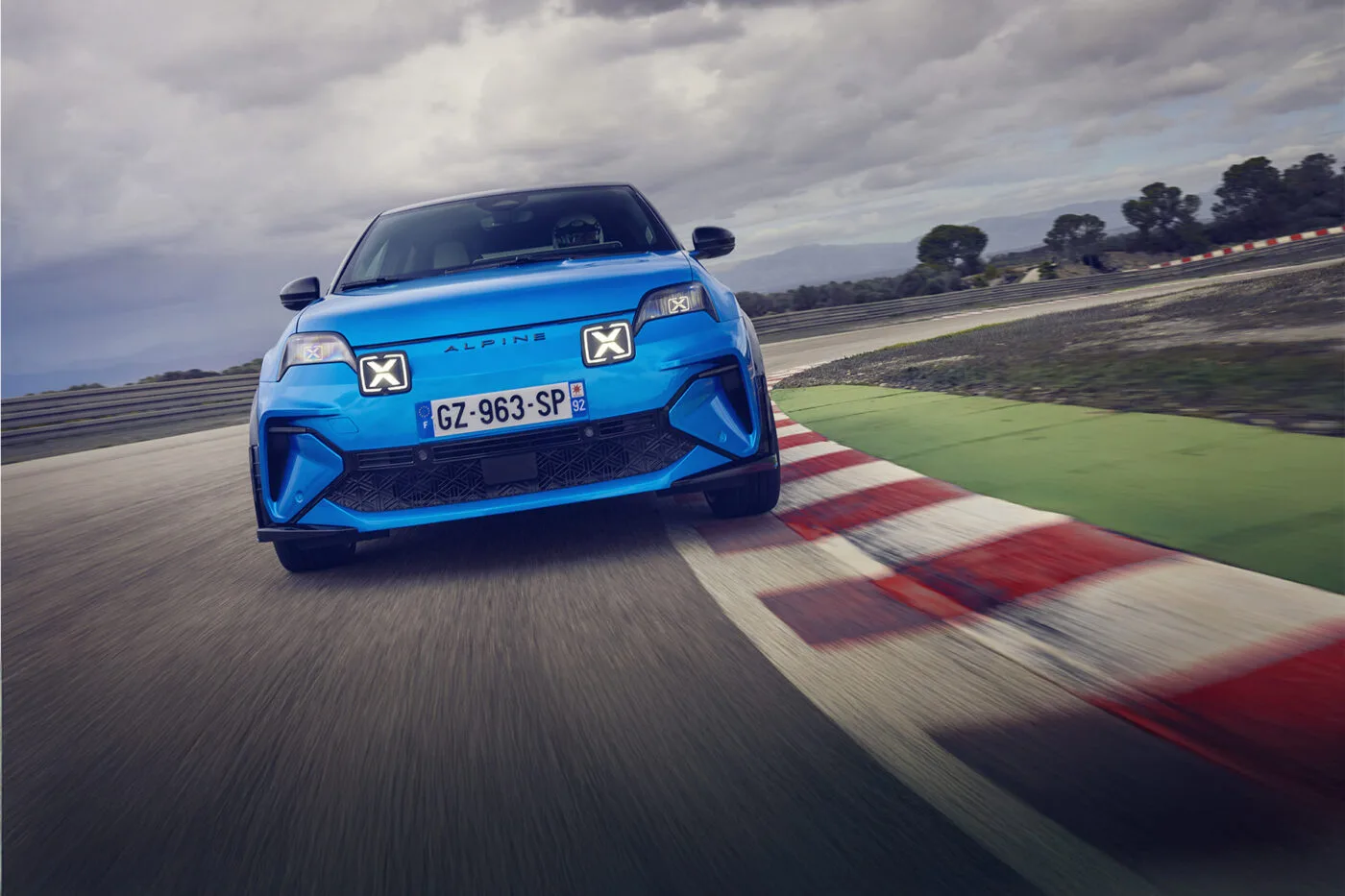
First test drive in the A290 GTS: Is Alpine preparing for the mass market?
Alpine sees itself as an independent brand, not a higher specification variant of Renault vehicles. That explains why the exterior has been pretty heavily modified. The X daytime running lights look like attached headlights and give the car a rallye look, rounded off by numerous add-on parts and a track that has been widened by six centimetres. Compared to the rather compact R5 (our driving report here), our test car looks massive and has a rather sporty presence on the road.
Unmistakably Renault
The Renault origin is decidedly more visible in the interior than on the outside; the screens and operating concept are identical to the R5. The quality is what you would expect from Renault: Hard plastic and glossy surfaces go hand in hand. At least everything is properly under-foamed, and nothing creaks or rattles. There is even leather upholstery (or imitation leather) in key areas, making the door panelling and dashboard feel surprisingly high-quality. Several switches have been added to the steering wheel, which was given a sportier design.
To reduce weight, only the lumbar supports on the front seats are electrically adjustable; the rest must be operated manually. While the seat bolsters at least offer some support, the seat surface is definitely too flat and offers too little support, especially when driving in a sporty manner.
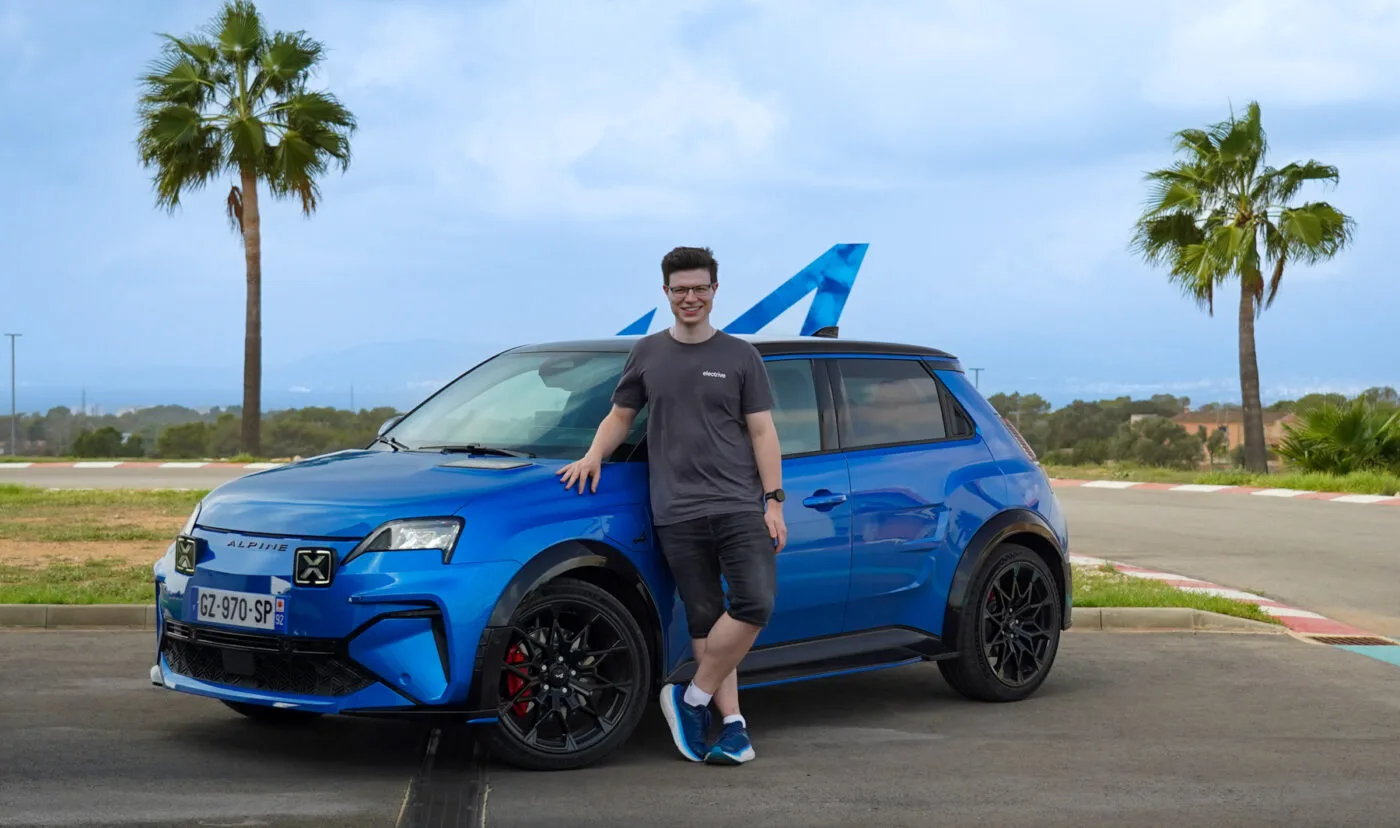
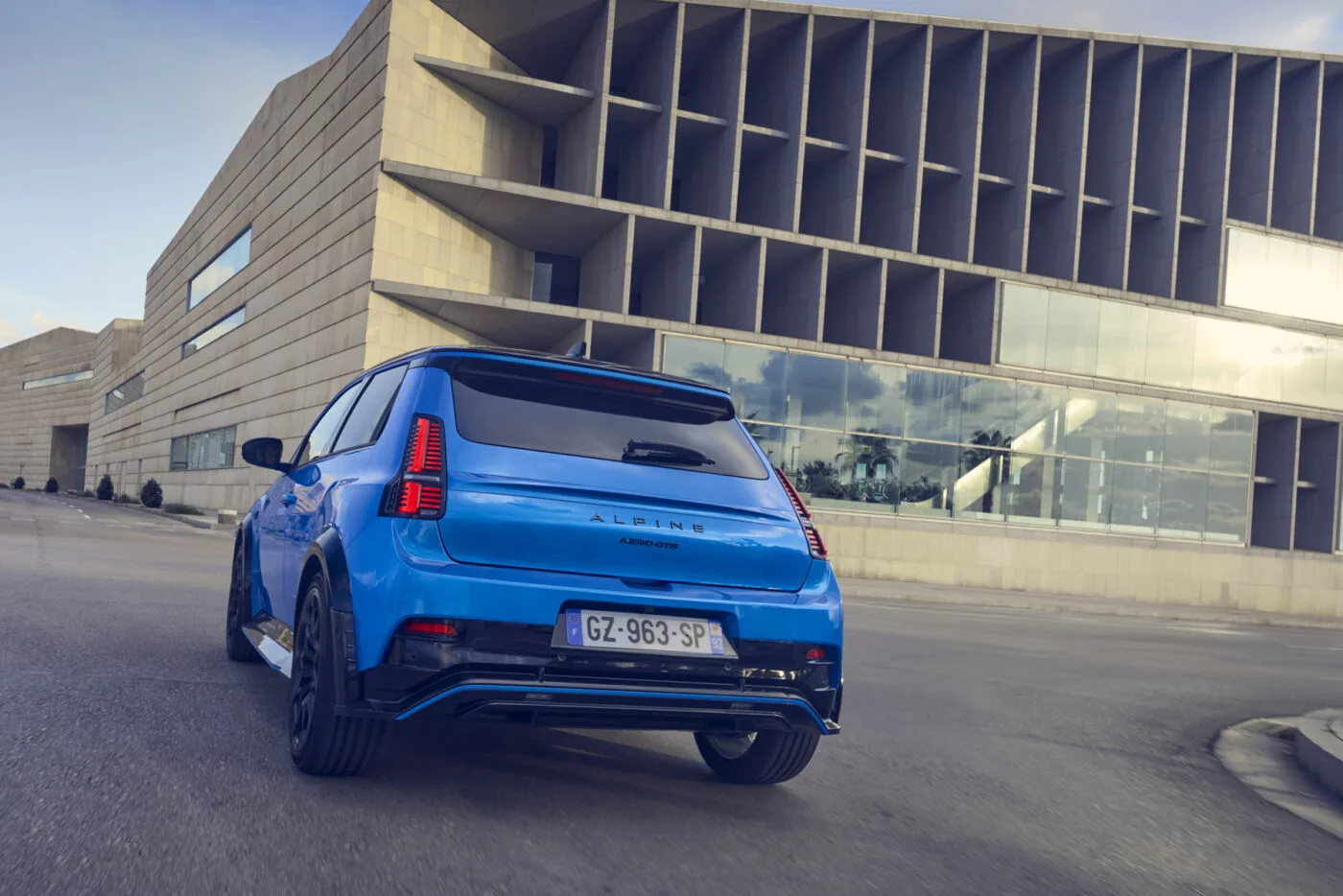
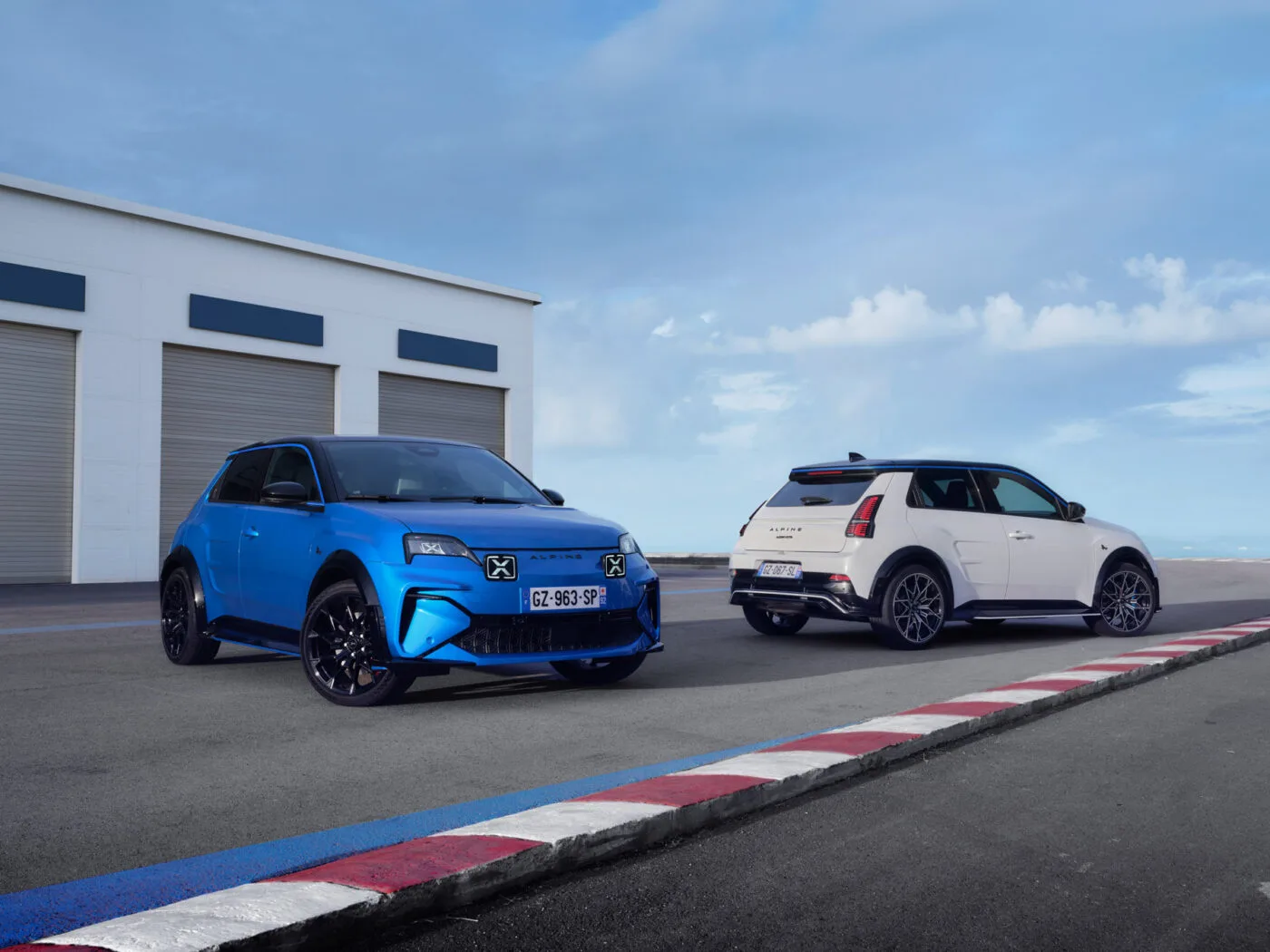
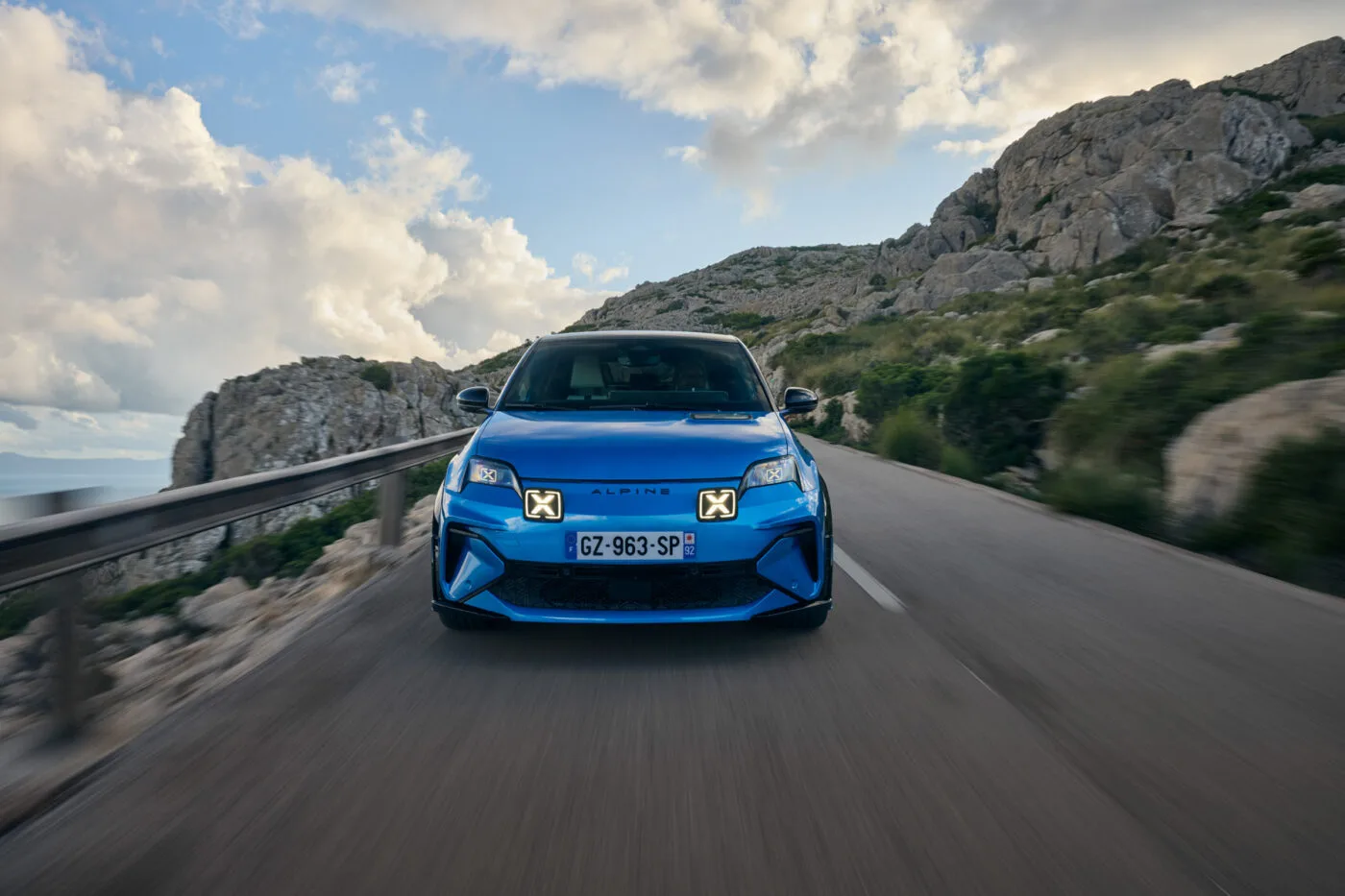
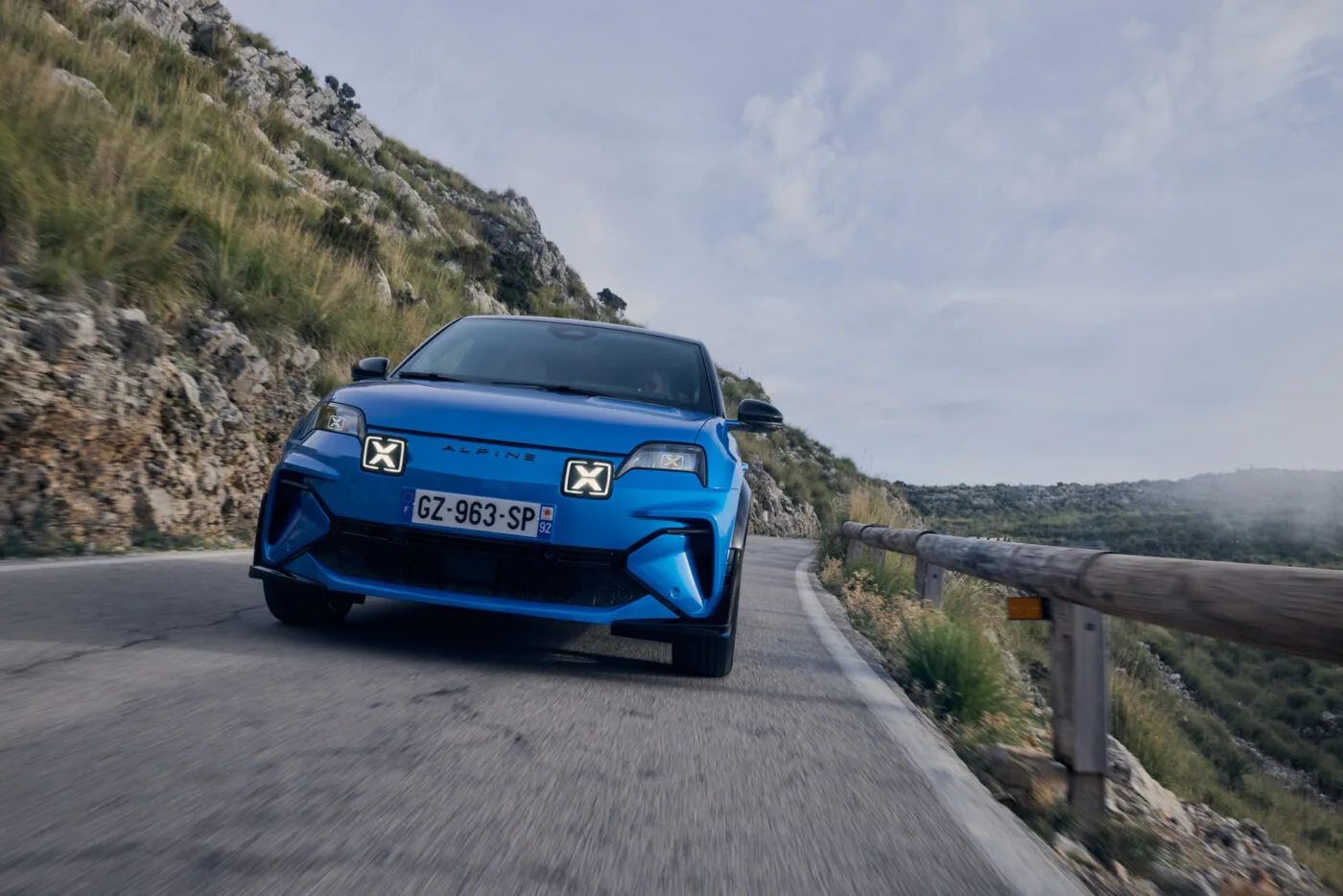
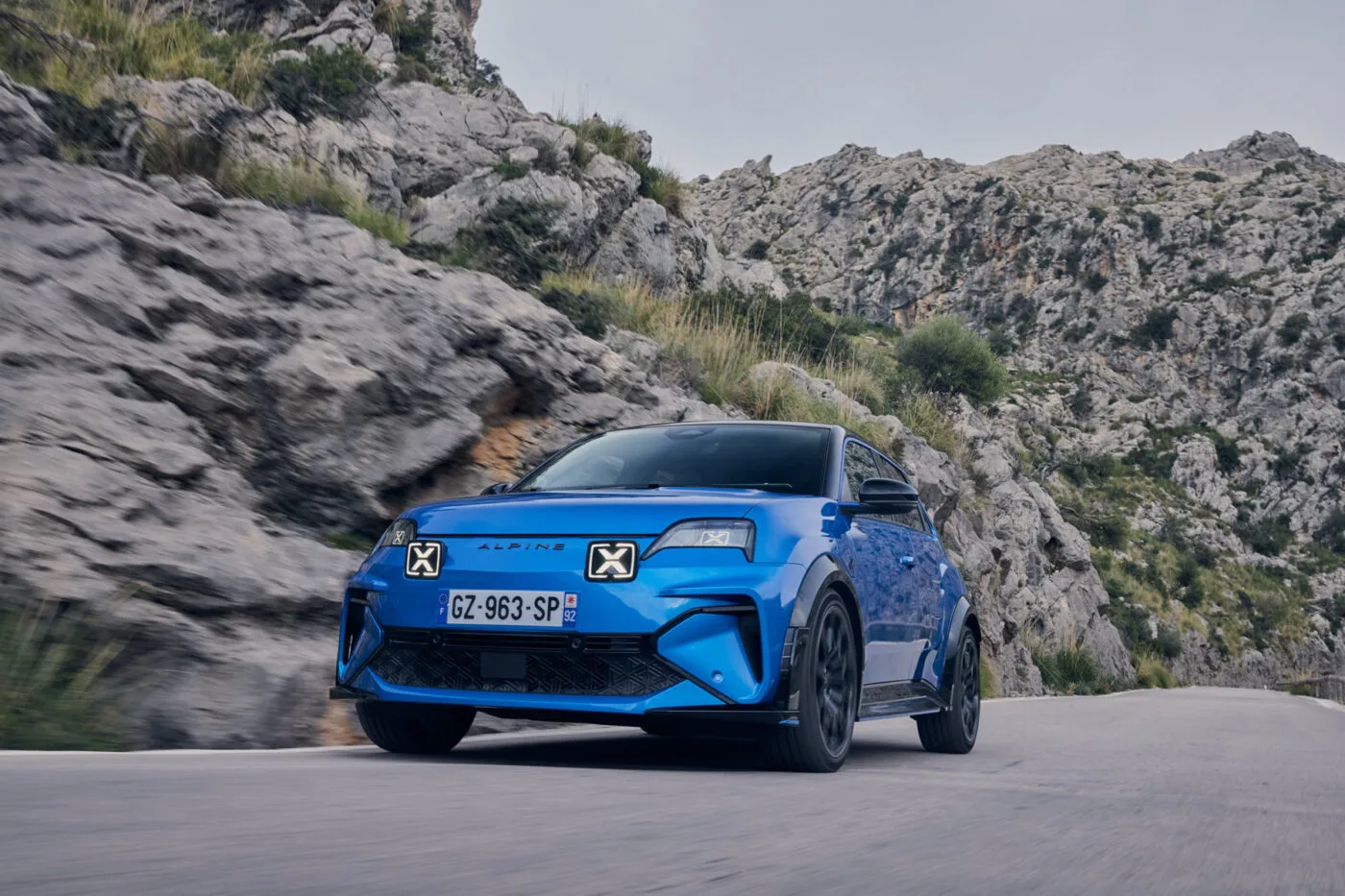
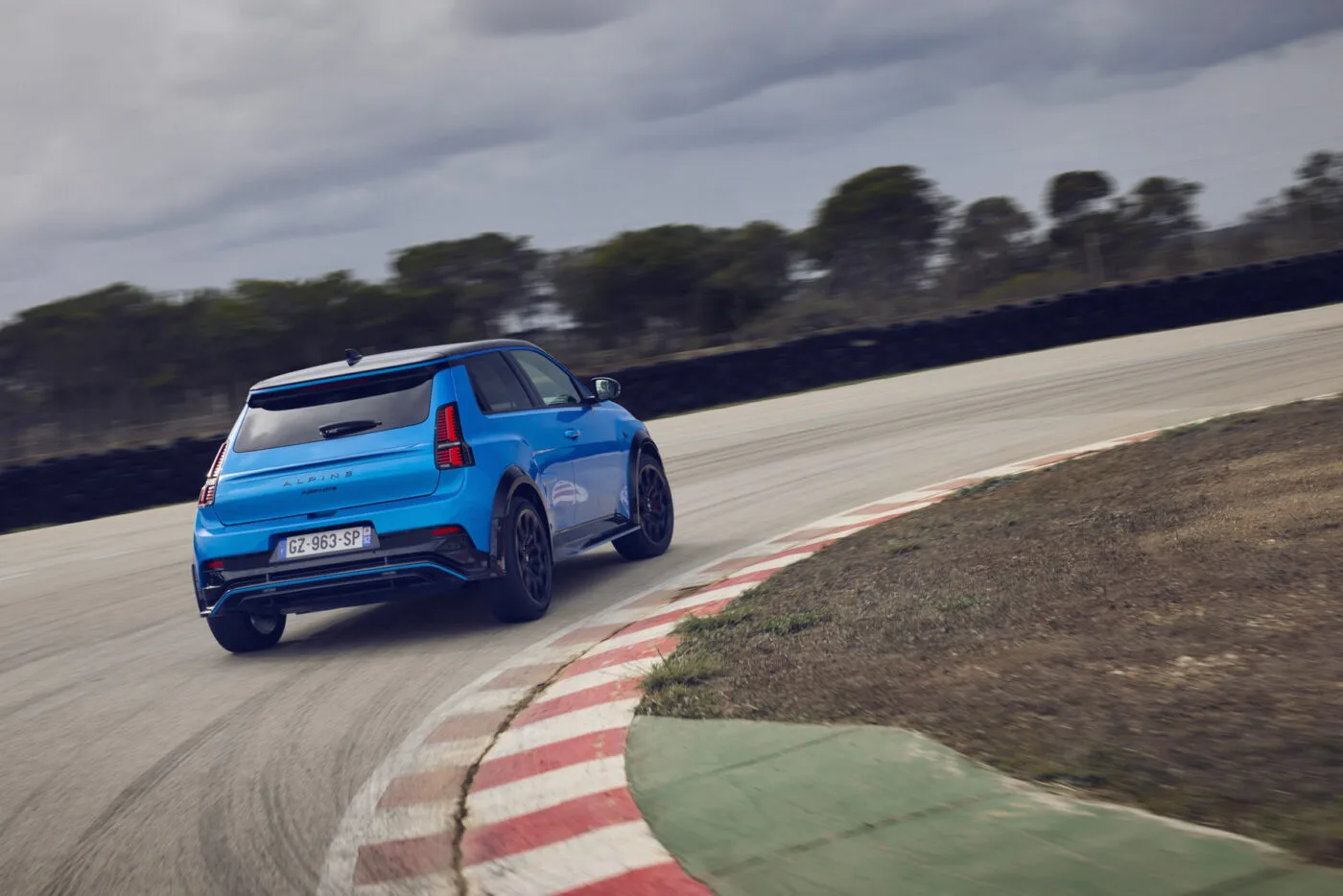
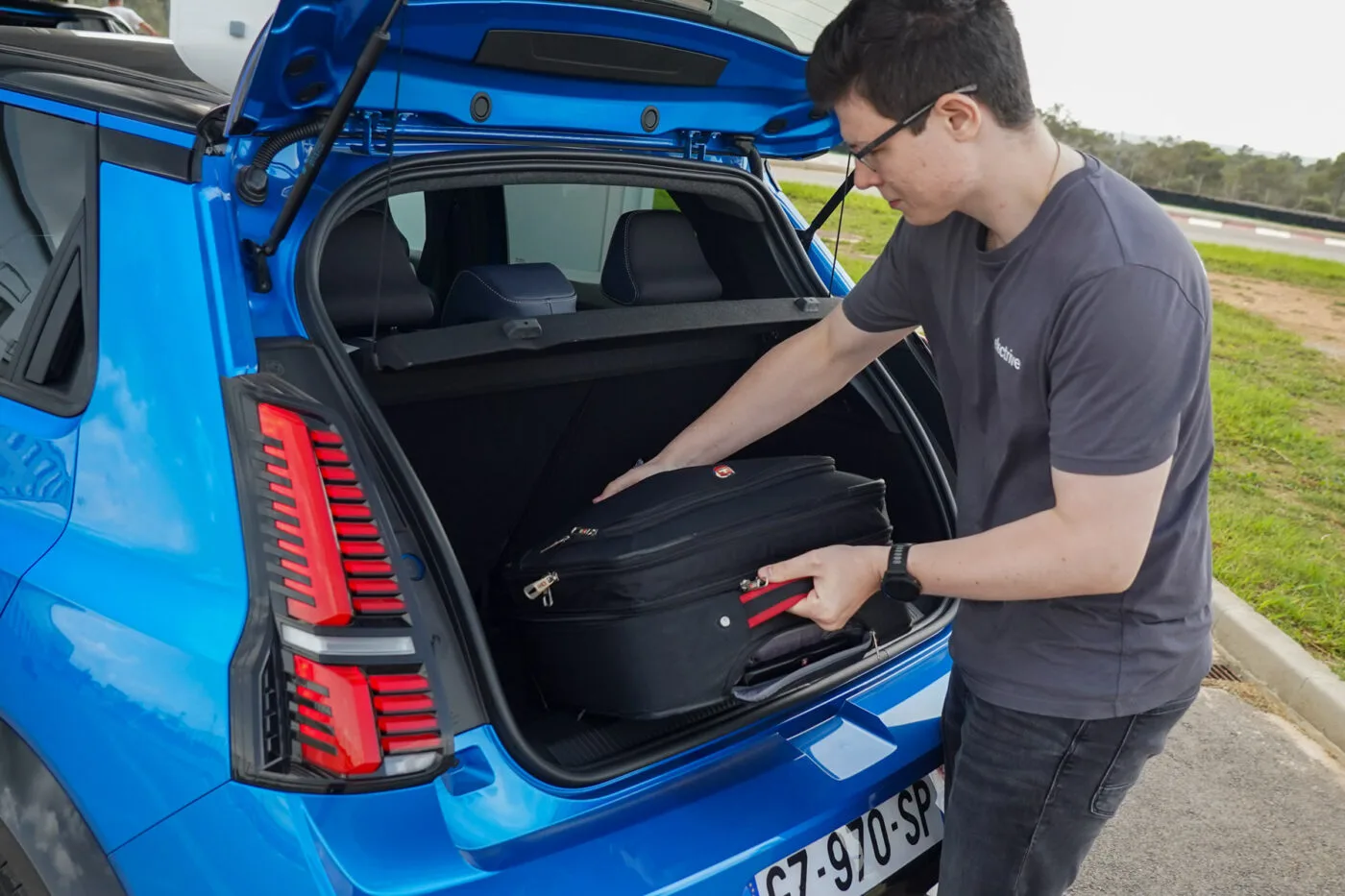
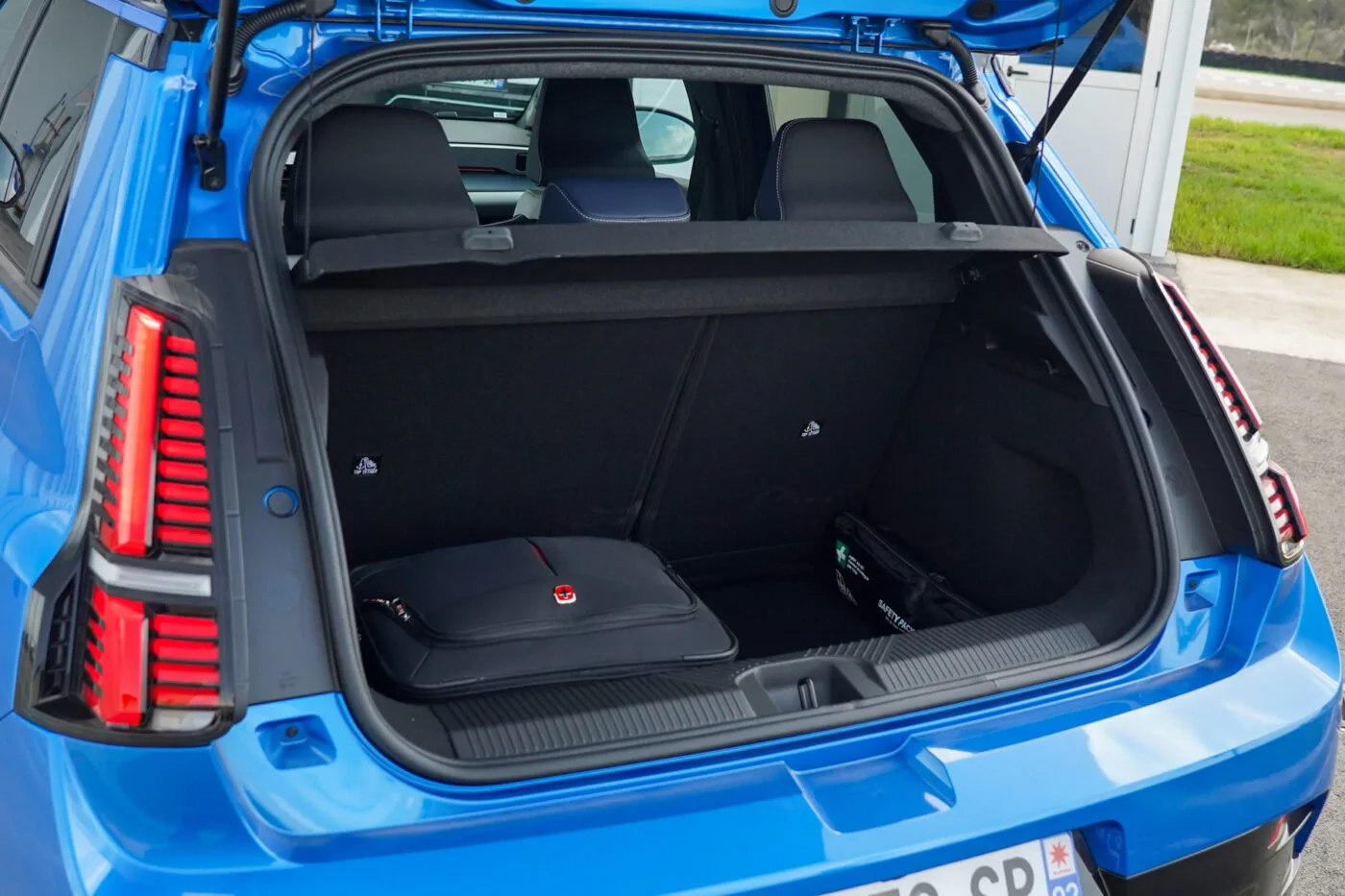
The space in the rear of the car is not huge, but it is sufficient. The flat floor gives the centre backseat a little more space. The knees are too high and the hips too low, but even Alpine can’t do magic if the external length is to remain under four metres. There is enough room for the knees to the front, and the feet can be placed comfortably under the raised front seat. At 1.80 metres tall, there is literally no headroom. However, anyone shorter than 1.70 metres can comfortably sit in the backseat. Speaking of small people: There are three Isofix connections.
The boot isn’t huge, but at 326 litres, it is significantly larger than you would expect in a small car. The rear bench can be folded down in two parts (60:40), allowing for a maximum load volume of 1,106 litres.
Unfortunately, there is no frunk, and the number of storage options could generally be larger – the rear doors have no storage at all.
Infotainment from the industry leader
When it comes to the software, Alpine did the right thing and didn’t bother attempting to develop bumpy in-house creations, instead opting for a working solution from Google.
As a result, everything runs smoothly, is logically structured and allows you to use a wide range of apps from the Play Store. Google Maps not only navigates reliably but the map can also be displayed prominently on the speedometer display. Android Auto also runs smoothly, even though it is almost unnecessary for an Android-based infotainment system. However, Alpine is not entirely without software bugs: Spotify can only be set up when the car is stationary, but apparently, it does not know when the car is stationary. When switching between the various speedometer displays, the otherwise so smooth system unfortunately jolts at times.

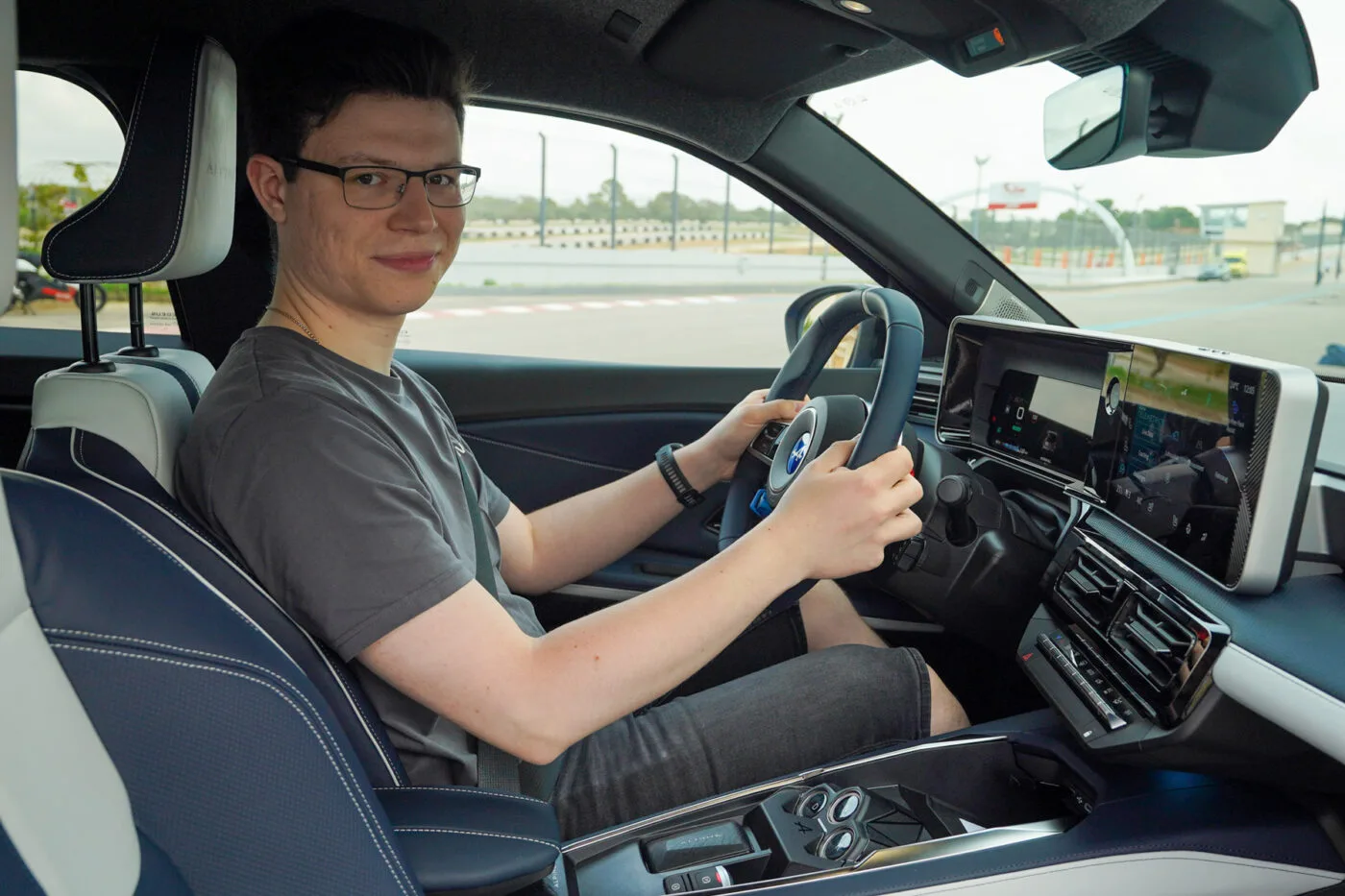
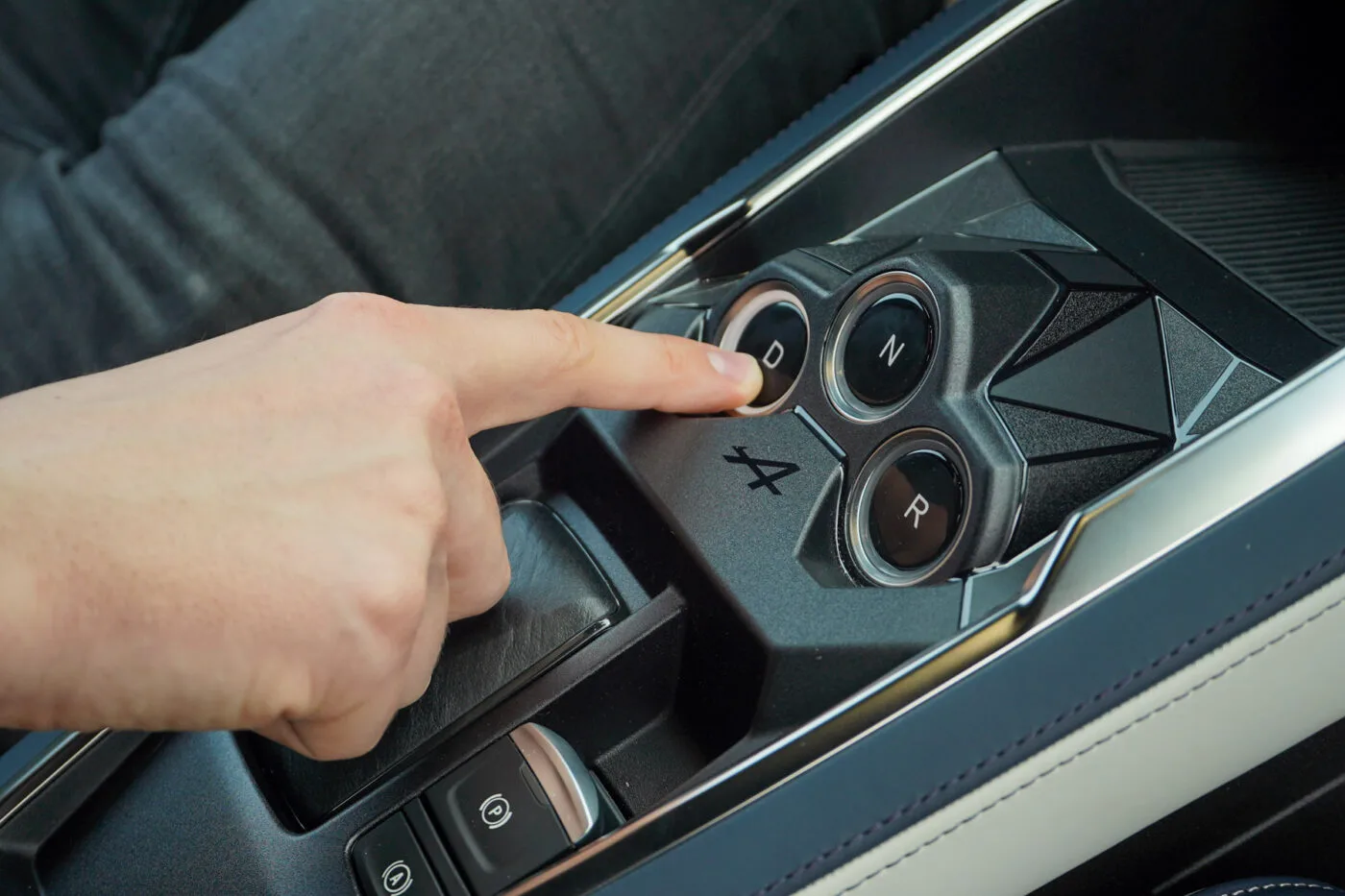
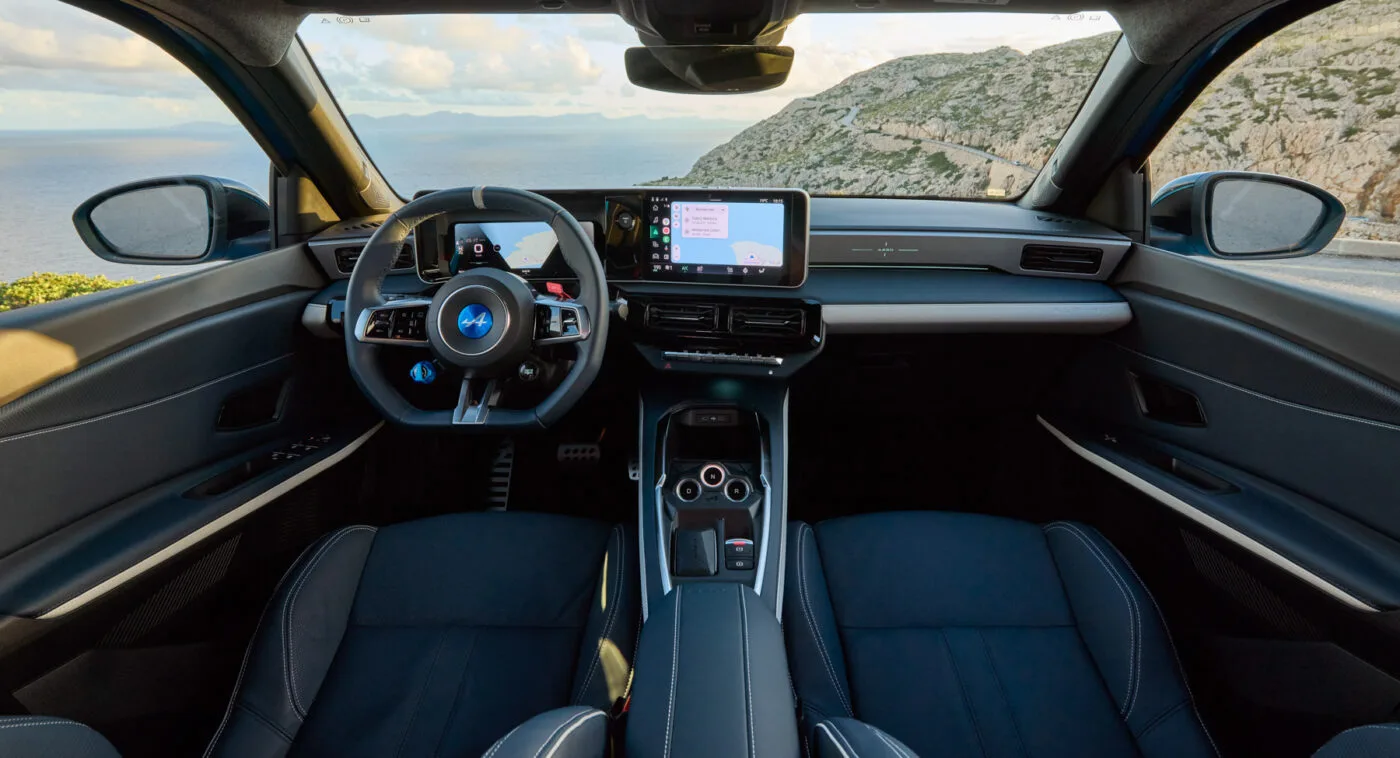
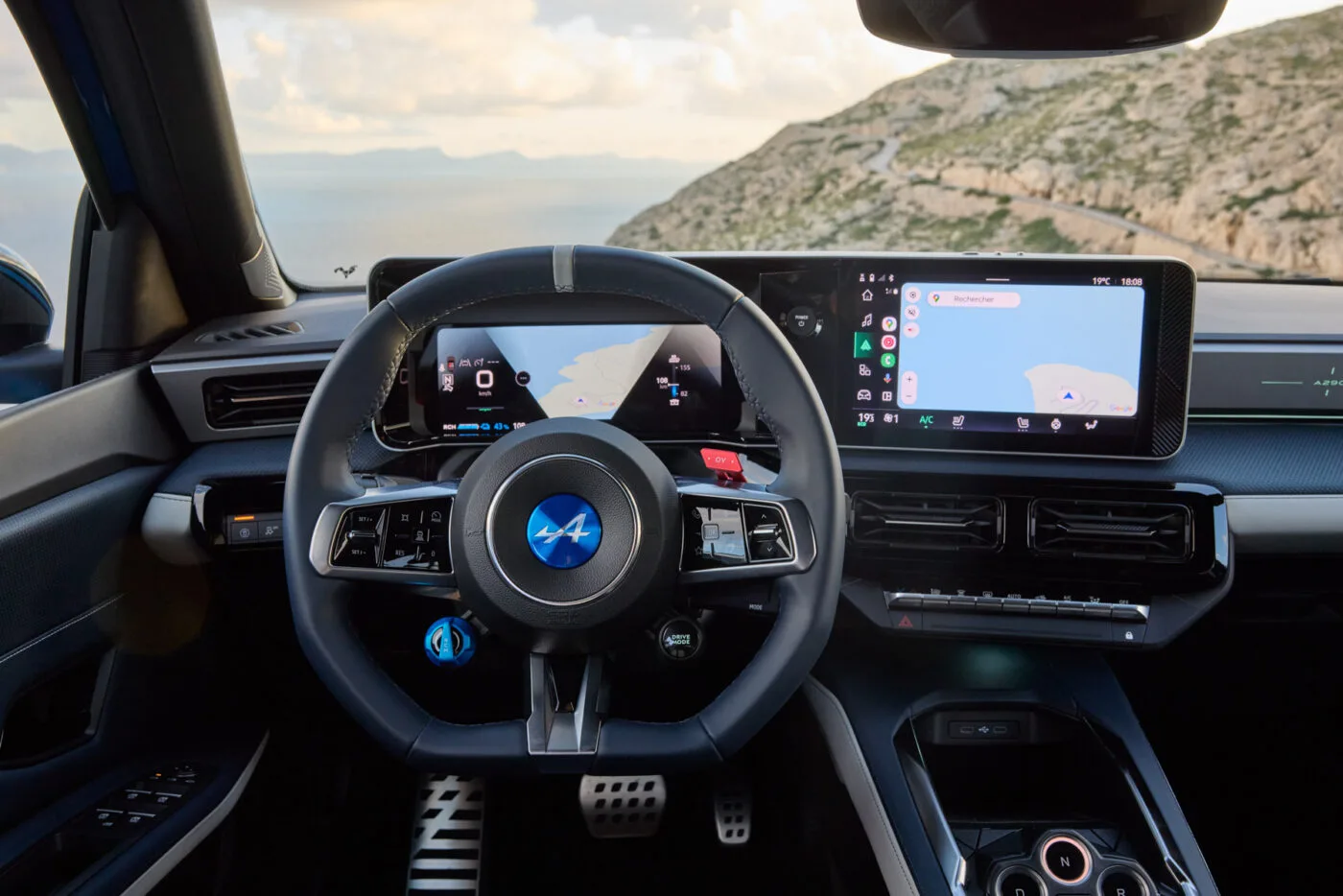
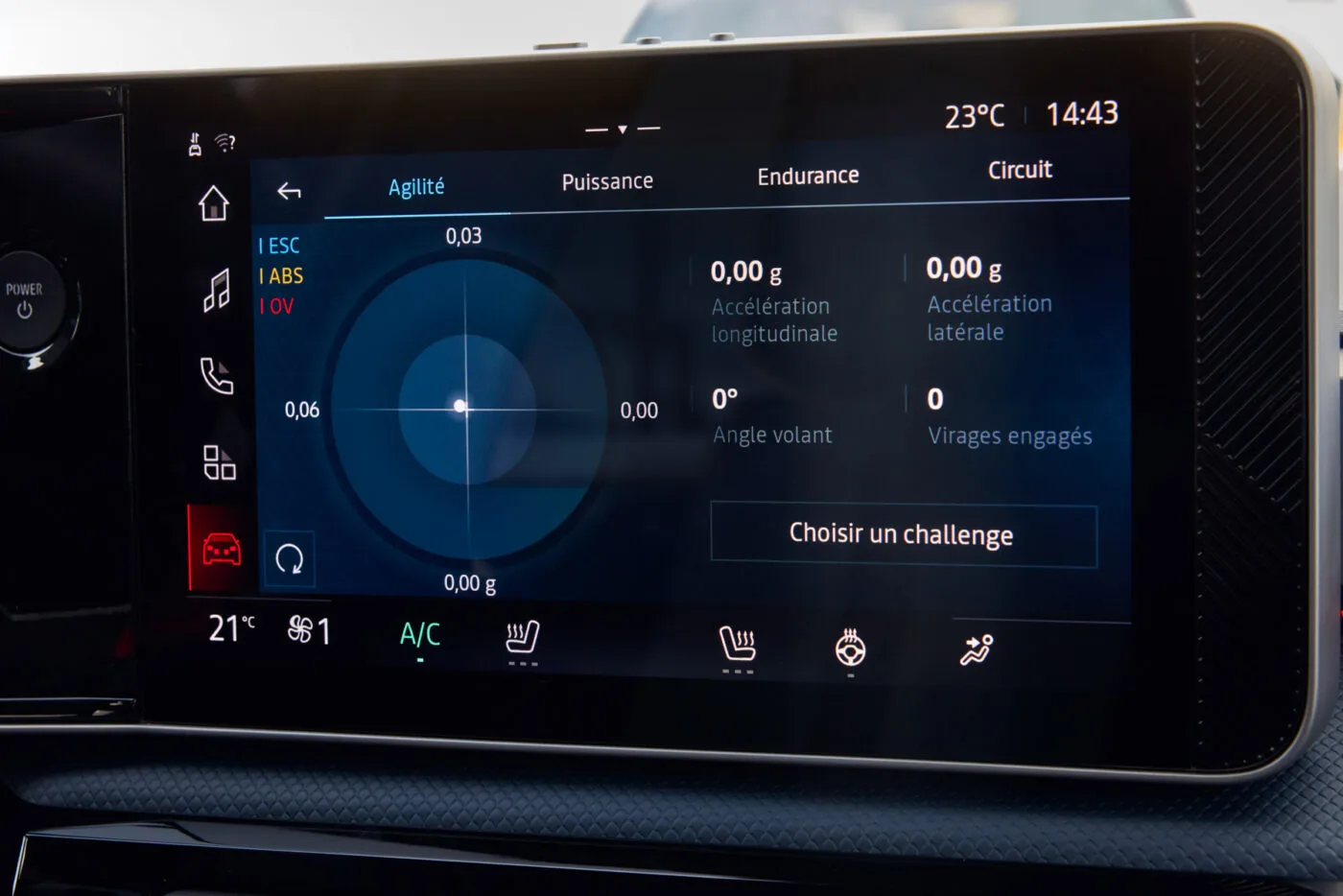
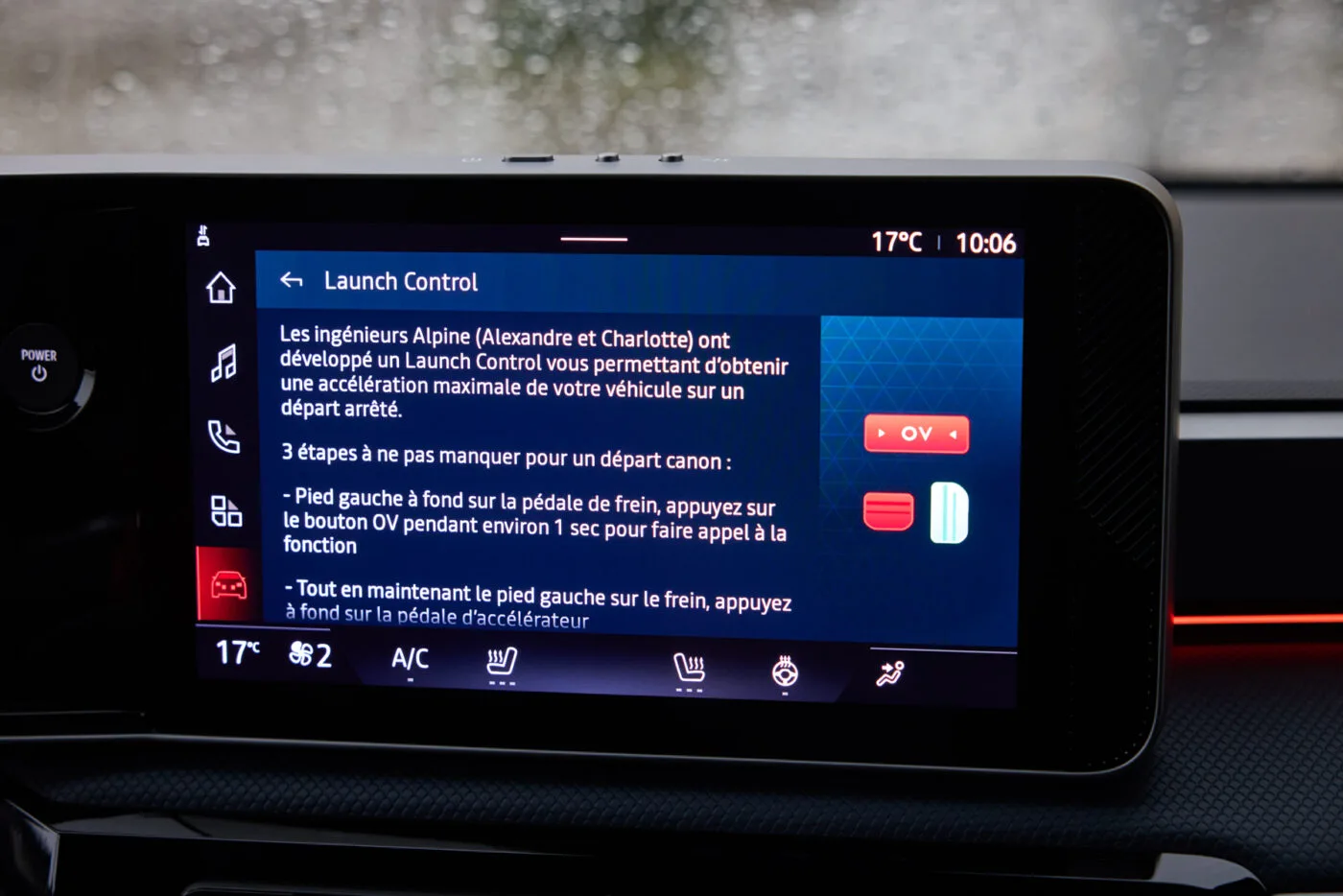
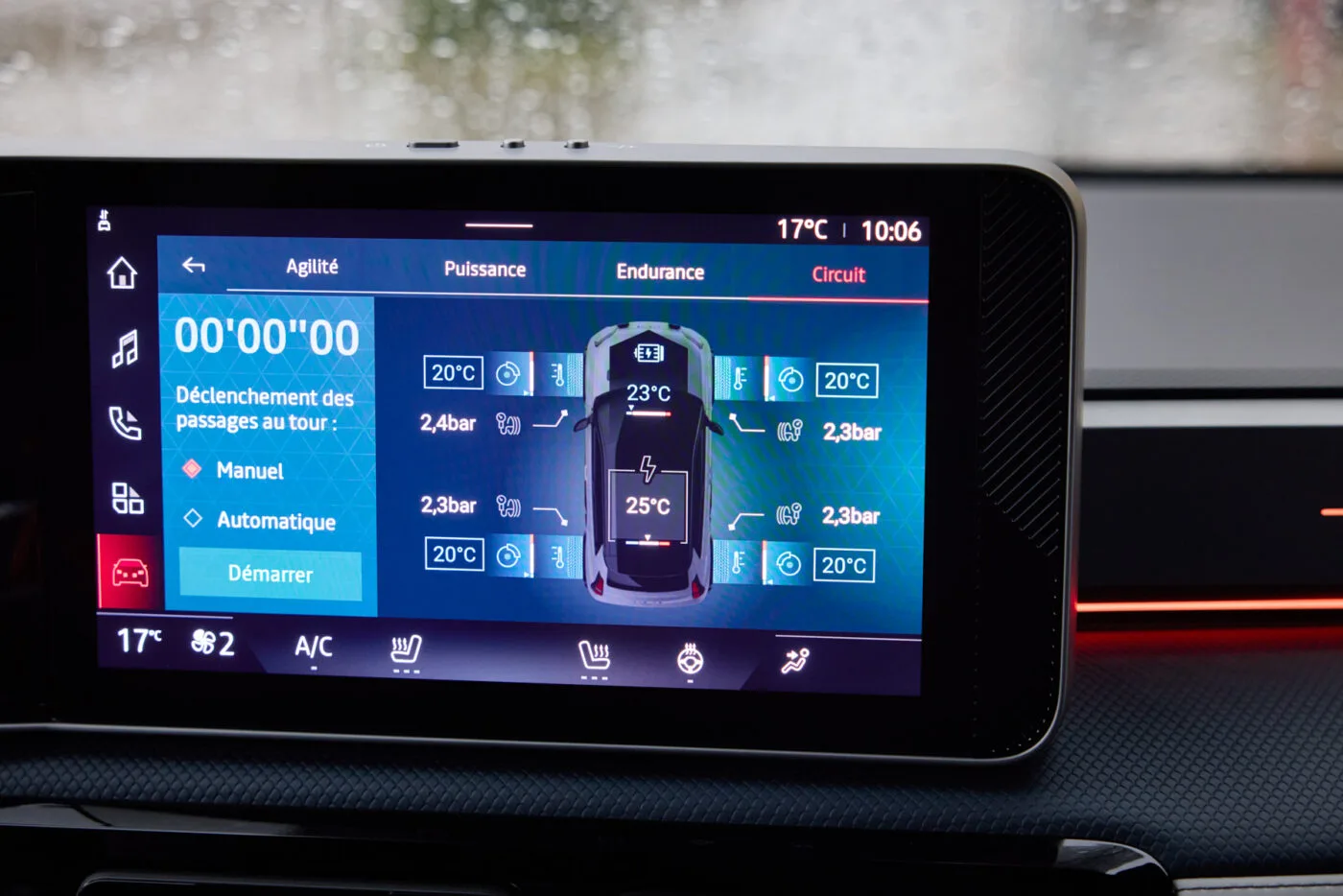
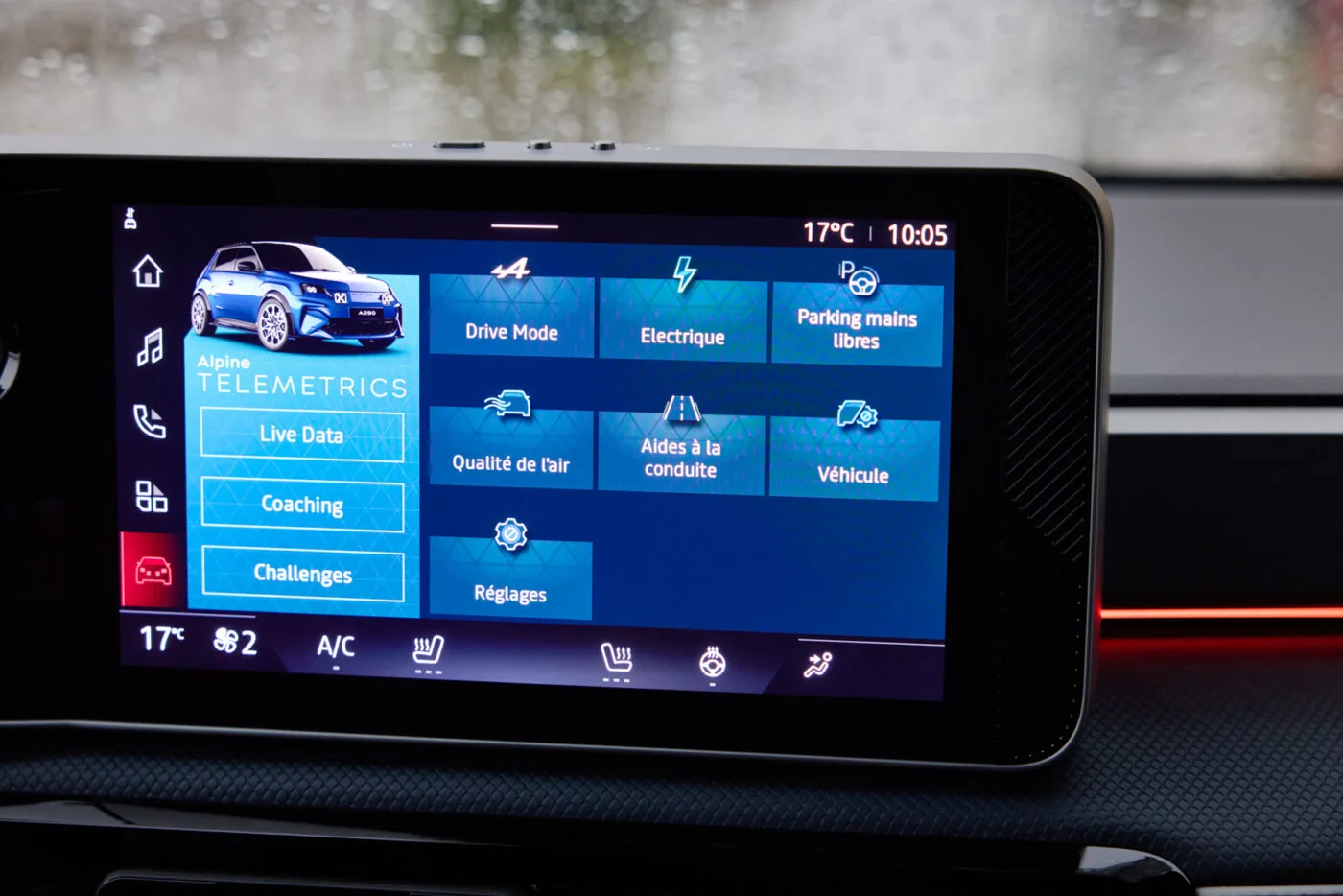
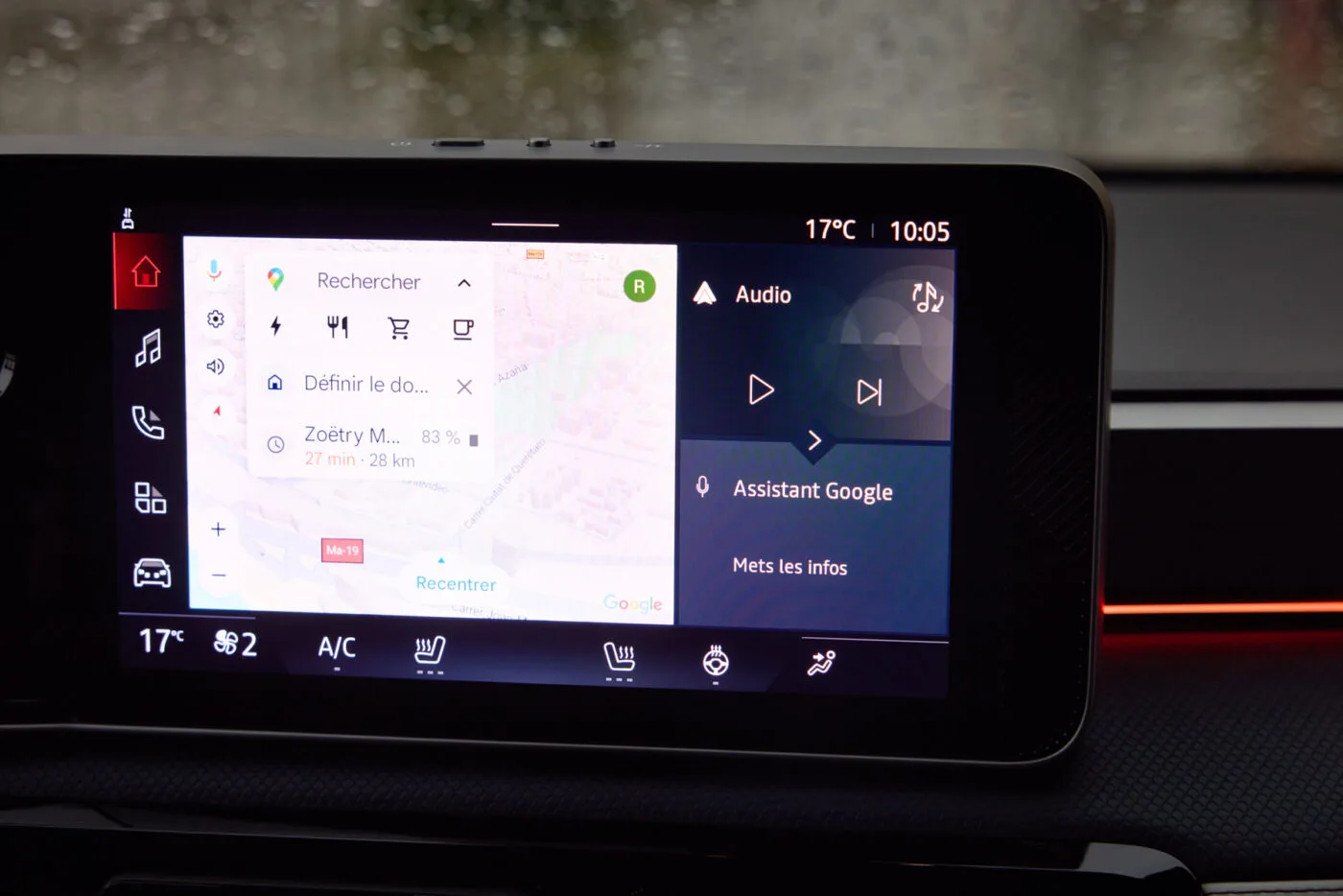
Gadgets for Alpine drivers
The fact that the A290 is not simply the top-of-the-range variant of the Renault 5 but an independent model is emphasised by the numerous features in addition to the higher driving performance (130 kW in the basic version and 160 kW from the ‘GT Performance’ upwards). There are, of course, the typical Alpine large gear selector knobs in the centre console and sporty, firm suspension (more on this in a moment). There is also an extra rotary switch for the recuperation levels, making real one-pedal driving possible.
For the extra boost when overtaking, the steering wheel button for more power has been copied from Porsche – at Alpine it is called ‘OV’ and is positioned in the upper part of the steering wheel. However, this button is just a nice gimmick. The same power is available with a kick-down when you exceed a pressure point on the power pedal. There is also a switch for driving modes and extensive software for analysing races with tips for a sportier driving style. The artificial sound sounds a little exaggerated and brassy in Launch Control mode, but otherwise, it’s quite nice. Nevertheless, we quickly switched it off and enjoyed the peace and quiet.
Made for winding tracks
Unfortunately, there is no direct start; you still have to press the start/stop button before you can engage a gear. Driving is great fun, the propulsion is more than sufficient for a car of this size. Alpine emphasises at every opportunity that the A290 is the most powerful car in its class. That may be true, but the next most powerful competitors are not much bigger. A Smart #1 is less than 30 centimetres longer, takes half as long to reach 100 kph and, thanks to all-wheel drive instead of front-wheel drive, can really put the power on the road. The Alpine, on the other hand, always lacks a bit of punch; six seconds from zero to one hundred no longer knocks anyone’s socks off in the electric age.
| A290 GT + GT Premium | A290 GT Performance + GTS | |
|---|---|---|
| Drive | FWD | FWD |
| Power | 130 kW | 160 kW |
| Torque | 285 Nm | 300 Nm |
| Acceleration | 7.4 s | 6.4 s |
| WLTP range | 380 km | 364 km |
| Battery | 52 kWh | 52 kWh |
| Charging capacity DC | 100 kW | 100 kW |
| Charging time DC 15-80% | 30 min | 30 min |
However, when driving around the bend, the car shines with a great (albeit very hard) chassis and excellent manoeuvrability. The less than 1.5 tonnes whizz nimbly around every corner and don’t push outwards as sluggishly as bigger electric cars. That is particularly fun on winding mountain roads, where the 218 electric horses are more than enough.
‘Only’ 160 kW, but still a lot of fun on the racetrack
Alpine lets us out on the circuit at the end of the test drives to test the car’s racetrack suitability in addition to everyday driving. Here, the car surprises, especially with its low weight: little mass that pushes outwards makes driving in the bends really fun. Together with the firm suspension and precise steering, you feel like you’re in a go-kart. What Alpine gets out of the technical basis of a relatively simple compact car is impressive. The A290 responds to every steering command without a murmur, and even without the high-tech air suspension, the EV hardly wobbles.
Two points spoil the racetrack fun somewhat: the brakes are good but could be tuned more precisely. When braking hard from high speeds, the ABS takes a second too long to regulate properly. The little speedster quickly runs out of breath on the way up. As much fun as it is in the bends, pulling away on a long straight is boring, as there is not much ‘oomph’ above 100 kph.
Nevertheless, Alpine has made a remarkable car out of the rather unsportsmanlike basis and, with its very low weight, has created a pleasant antithesis to the 2.5 – 3 tonne SUVs, which may be more powerful, but cannot hide their pounds in the bends.
No surprises when it comes to assistance
Back on public roads, one important point is still missing for everyday driving: the assistance systems. There is little to say about them, as they are average in all aspects. The adaptive cruise control does what it should, as does the lane departure warning system – as long as you are driving on relatively straight motorways. On winding roads, the little helpers quickly stumble; leaning back and letting the car do the work is impossible here. But Alpine customers are unlikely to expect this, as the A290 is not a chauffeur-driven vehicle but a fun car. Most of the time, we leave the assistants deactivated and prefer to chase the car along the road manually.
The anti-slip control is quite a fun brake on winding mountain roads because it delays bold acceleration too long at the exit of a bend. However, this is not a major problem, as there is a button right next to the steering wheel that switches off the electronic assistants.
Charging, miscellaneous, and shortcomings
Despite numerous adjustments to the chassis, software and appearance, the underlying electrical technology remains essentially the same, which means the battery is not overly large at 52 kWh. According to the WLTP, the EV has a range of almost 400 kilometres – but in reality, it will likely quickly shrink to half that or less with an Alpine-worthy driving style.
The charging capacity of just 100 kW is also not really suited to the speedy runabout, and faster charging would have been all the more important to compensate for higher consumption.
However, there is a glimmer of hope here: when asked, Alpine representatives confirmed that the platform could do much more. From a larger battery to all-wheel drive, a great deal is theoretically conceivable – but nothing is planned for now.
Conclusion
It would appear that Renault has succeeded in revitalising the Alpine brand. In contrast to the many almost soulless electric cars of other brands, the A290 captivates with its French charm so that one even wants to overlook the fact that acceleration and charging performance are not really ‘sporty.’
As a fun vehicle for amateur race car drivers, the A290 is a nice little car. Individualists could also get a taste for it. After all, you don’t see many Alpine vehicles on the roads outside France. This could be your dream car if you want to stand out from the crowd.
However, the suspension is a bit too hard for an everyday or long-distance car, and racetrack suitability has its price. At 38,700 euros, it is quite moderate and relativises the weak points. Even the top-of-the-range ‘GTS’ model, which we got to test drive, still has a reasonable base price of 44,700 euros. So it seems quite possible that Alpine could make itself comfortable in the niche of affordable, sporty cars.

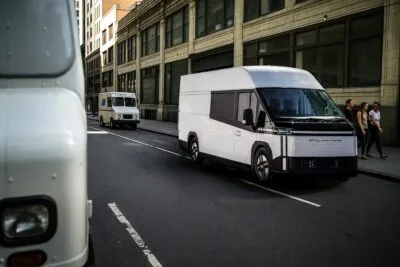
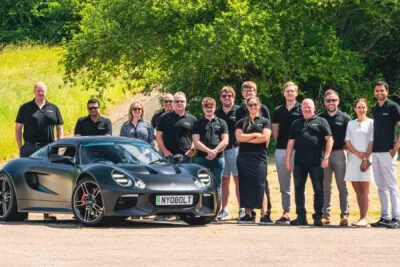
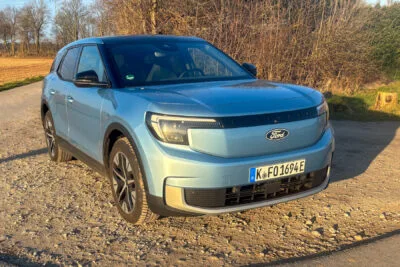
0 Comments